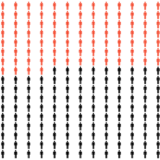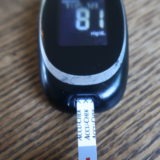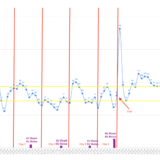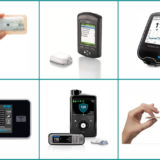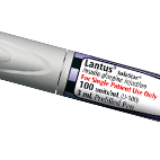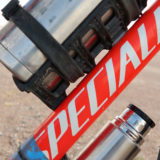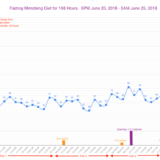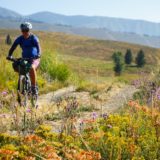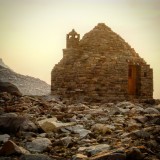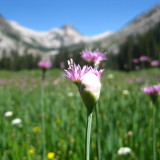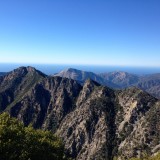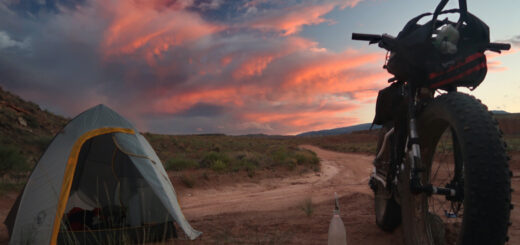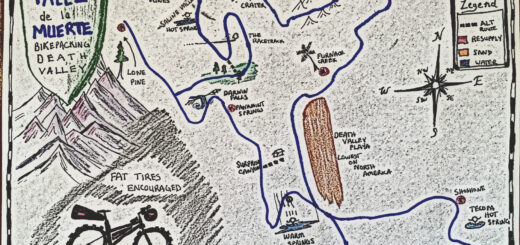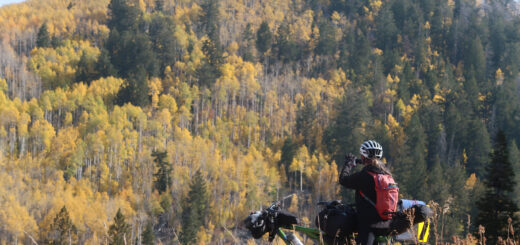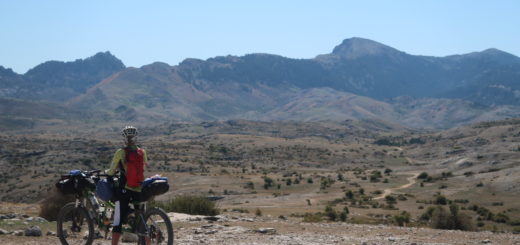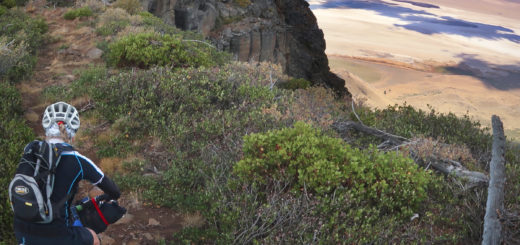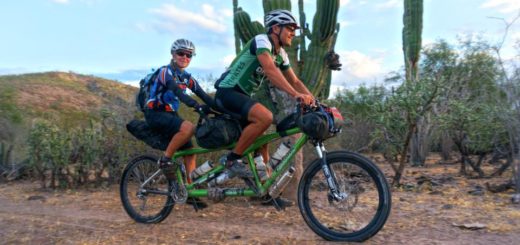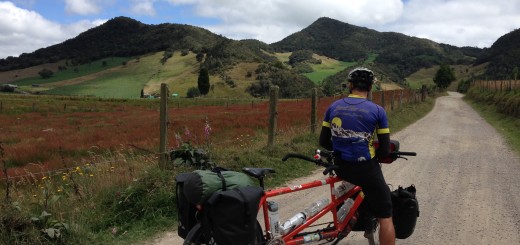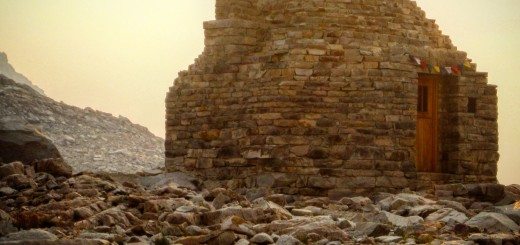01/19/2024 Bikepacking The Ivory Coast Day 164 : Phone Calculator
So, how do people afford the phones? Let’s do a little “Africa Math,” which if you’ve been an avid follower, you know that this means my arithmetic can be completely wrong. But let’s do it anyway.
I haven’t asked anyone here how much money they earn, but everyone tells me they earn “very little.” Wikipedia corroborates this information: Annually $1,180 per person in Guinea, and only $510 per person in Sierra Leone. There are only 5 countries where the per capita income is lower. (I’ll post a screenshot). In the US, that same GNI figure is about $76,000 per person.
Ever since reaching Senegal, my cycling has been almost exclusively riding past small villages with similar layouts and huts. I’ve been trying to avoid towns, except when I need to resupply electricity. Each village is long and narrow; and since it is right next to the road, I can see much of what goes on. I also enter the villages to use their wells, talk with the people, or buy some food.
I’ll break it into two parts: money coming in, and money going out. it’s important to remember that many of the activities in Western Africa are money-independent, which will partly explain how it is possible to survive on less than $2 per day. It is also important to realize that some of the costs are being subsidized by foreign assistance (particularly in Sierra Leone; maybe not so much in Guinea). Although I’ve pointed out the APPARENT lack of actual ongoing aid activity, it is clear by the presence of school buildings and pump wells in MOST of the villages I visited that work has been done historically, if not currently. Also, thanks to my friend Mark Glenesk for sending me this podcast about “giving money instead of stuff”:
https://podcasts.google.com/feed/aHR0cHM6Ly9mZWVkcy5ucHIub3JnLzUxMDI4OS9wb2RjYXN0LnhtbA/episode/MjJkOTQwYzAtZDg2Yi00MDAzLTg4NjYtMGQ5NDgwZDU2ODYy?ep=14
According to the podcast, research shows that giving money instead of specific items helps the villages more because they know best what they need. This is something that I would not be aware of - because you don’t just see money being handed out. In the podcast, it arrives as “mobile money”.
Mobile money is very common all over Western Africa. In fact, you will see more signs for adding or withdrawing money to/from your SIM card than you will see for adding internet access to your SIM! I haven’t participated in the mobile money myself, but once you have an account, a bank is not needed to get money. Someone from France can do a mobile transfer to Ivory Coast, and then the recipient can walk to one of the many kiosks and get local cash. It is possible that some “income” is arriving in this manner… and of course, you need a phone, SIM card, and plan to make that happen. Here, the signs to receive say there is a 1% fee. No fee to send.
Local people would tell me that the only white people they see are on TV, but based on the behavior in most villages, I think that aid workers (remember, aid workers can be local people too) have been through a good percentage of these villages at one point. In Guinea, I saw almost no Land Rovers, whereas in Sierra Leone, they made up a significant portion of the total traffic. It is possible that instead of doing physical projects that I would see, they are busy arranging cash payments to help people. Based on my estimation, a person could barely survive on the $510 per year in Sierra Leone. Costs are equivalent in Guinea, and I think one could just get by on the $1810 income in that country; maybe have a little extra.
So, now that we have considered supplemental income, let’s look at EARNED money coming in. In that case, everything is dependent on the region. For example, in episodes 133 and 134 in Eastern Senegal, it seemed like most people derived income from cattle or goat products (milk and meat). In the Guinea highlands, women can supplement cattle and goat income by sitting on the side of a dirt road and selling fuel in glass bottles. Right now, they can make 400% profit due to the fuel crisis we saw in episode 142. In other parts of Guinea, such as in episode 162, people derive income from bauxite mining.. or diamond mining like we saw in episodes 157 and 161. Finally, people also can sell tropical agriculture products like we saw most recently in episode 163. There are probably other things happening, but these are some of the main ways that money flows from the outside world into the villages.
Money can also flow within a village. For example, people make mud bricks (episode 162), or gather material for making the grass roofs of the huts. People in the villages are entrepreneurs when they can be; we saw people selling electricity in episode 160, or even broken bike parts in episode 144 (*admittedly a city, not a village). In the tiny villages, though, people might be selling door hinges or weird odds and ends. Remember people scavenging trash in episode 120; it may look like trash, but it still has resale value in a world where “stuff” is hard to come by.
Now that we have examined some money inflows, let’s look at outflows.
The majority of the materials I see in any given village are sourced locally. The huts are made from mud - that is mud mixed with grass to make it strong. The roofs are made from grass. Windows are framed with wood, and tables and benches are made from rough hewn lumber - in other words, wood cut by hand. People use thick sticks (remember “the best sticks?”) for mashing cassava in a wooden urn-shaped mortar. Provided there still are some trees and there hasn’t been a severe drought, these items could be obtained by an individual without the use of money.
Materials from “the outside world” (stuff that relies on money) are few. Here is the list: plastic chairs for sitting in front of the hut, large plastic tubs for water collection and washing clothes, large metal cauldrons for cooking in. A few utensils. People often eat their rice out of metal bowls (the portions are surprisingly large). Occasionally, some buildings will have metal roofing instead of thatch. Most of these items are “one time expenses”. Understandably, they may need to be renewed eventually, but they all last a long time.
There are also materials seen that need to be renewed more frequently. The majority of what people wear daily is obviously charity donated clothing from the US. Often they have logos for “fun runs” or marathons. I’ve rarely seen American clothing for sale; it may even be freely distributed by NGOs. This same donated clothing also shows up in Latin America, but it is not free there (it’s very cheap, though).
Believe it or not, that is a comprehensive list of the “from the outside” materials I always see! If you add up all of the above, I think it is safe to say it’s less than $30 per year per person for the aforementioned expenditures.
People need to eat, and the majority of the calories come from palm oil, cassava and rice. Some rice is grown here (you see the women winnowing it and drying it in the street if there is pavement like episode 162). It seems much of the rice is imported in huge sacks from China. This has a cost. You can get about 2 pounds of dry rice for a dollar.. and according to Cronometer, that is 3200 calories. That is more than enough energy for people (who aren’t cycling across Africa). Additional calories come from cassava and palm oil at about the same cost per calorie. People also need nutrients; complete nutrition can be had from 3oz of fish, a few eggs and maybe a piece of tropical fruit per day. Per calorie, these items are more expensive than rice, cassava, and oil, but you need less of them,so let’s add another $0.50 per day, or about $1.50 per day for food. There are signs of fish farming (like literal signs left behind by NGOs who have “taught people to fish”). I saw many inland people walking with nets, and even met some women with fishing tackle who invited me to help them fish. This was- just a few miles from an NGO project sign about “empowering women to fish”.
I saw some cassava cultivation (cassava is also called yuca or manioc and is a very starchy rhizome that produces tubers twice a year in the tropics). Eggs are provided by chickens. Pineapples, Bananas and coconuts are grown at certain latitudes / elevations. Other than that, I’ve seen little cultivation. Again no money for this: Just agricultural work. People have cattle that wander everywhere, and tiny goats are ubiquitous. I rarely see meat being eaten, so I assume that the majority of the meat is exported for cash money. Water is essentially free money wise (but not time-wise) - either from a well that is in constant use or from a river. If a well is functioning and it is daytime, someone will be there. Washing usually takes place in a river using surface water, or at the well if there is no surface water within walking distance. Clothes dry on the concrete wall surrounding the well, or on the ground or bushes. In cases where wells are broken, people will carry surface water in jugs to their villages - or sometimes on their head or a motorcycle.
So back to the math: 365 days x $1.50 per day for food and water = about $550 per year for the “minimal” diet. Add that to the $30 from the previous paragraph, and we are at $580.
If you believe the Wikipedia numbers (and mine), we have just blown the entire budget for the average person in Sierra Leone. This probably explains all of the Toyota Land Cruisers running around. I never saw food distribution; I imagine that with the latest research, they’re more likely to be giving cash these days - which is more efficient to deliver anyway. In spite of a common language (English), people in Sierra Leone either pretended to not understand or changed the subject when I asked about aid, so I learned very little from the villager perspective.
For “rent,” let’s just take $6.50 per month from the Wall Street Journal, multiply it by 12 months and fudge it to $100 per year. Although it appears that people are squatting, people have told me that they do need to buy their land. Now we are at $680.
Luckily, we still have money left over for everything else if we are in Guinea, but not of we are in Sierra Leone.
As far as I can tell, “everything else” consists of elective expenses and health care.
In elective expenses, we see: traditional clothing. While I’ve seen people making this locally, I haven’t seen anyone making the fabrics. This has a cost, maybe even $100 per year? Often the garments are quite elaborate. Now we are at $780.
Next, transportation: it seems the majority of villagers just walk places. Motorcycle taxis are available, but in the villages people mostly seem to stay put. We can pretend that villagers travel occasionally, so let’s say $20 for a few moto-taxi rides per year. Now we are at $800.
For entertainment, kids play exclusively with toys made from trash. Old tires, sticks, and cars made from discarded oil and beverage containers. I’m putting $0 for that expense. Audio and visual entertainment is largely shared. If one person has a solar powered radio, people will cluster around it. These radios cost about $4 USD. If there is something to watch on TV and someone has a TV, the entire village will cluster around that TV at night. Daytime TV is not common, as it is too bright outdoors. I noticed that yesterday, admission to watch the Africa games was $0.23 per person. So your annual budget for entertainment could be a steep $80 per year if you watched every day. Let’s just take that number. Now we are at $880 per year.
Next, there is the elephant in the hut: Heath care. While medical costs in Africa are not wildly exaggerated compared to the US, there are certain treatments in the US that are *actually* expensive, and simply unavailable here. In all my time in the remote villages, I’ve seen predominantly healthy people, very few disabilities, no one starving, and besides boogerie children, no one overtly ill. I think there is a morbid explanation for that: If you can’t survive without health care, you don’t get to keep playing the game of life.
Related to that topic, one of the best podcasts I have ever listened to can be found here; it might make you cry:
https://peterattiamd.com/tomcatena/
Health care seems to be very minimal here.
The most basic village simply consists of some huts, and a water source.
The next step up, there will be a private area (like a partially screened off area) for a bucket shower.
The next step up, there will be a soccer field - always on the periphery of the village.
Next up, a school building, almost always near the soccer field. School is compulsory and free for children 7-13 in Guinea.. and for 13 years in Sierra Leone. As we have seen, actual attendance is questionable.
That is the upper limit of development in the majority of the villages, but some were even more advanced:
Next up, you might see a religious building (usually a mosque in my travels)…. This may incur additional costs for the villagers in the form of a collection? They are always the most elaborate buildings in any village when they exist.
And finally, you could possibly see a “health post.”
So, if you’re healthy, in Guinea and Sierra Leone you could probably eke by on $900 per year using my highly fudged math. In Sierra Leone, the average person would need outside support. In Guinea, that would leave the average person with enough surplus to buy a smartphone, buy a SIM card and still charge it with credits.
I saw a smartphone ad for $29,000 XOF, which is about $45. A SIM is a one time expense and just a few dollars. Credits are sold all over in minuscule denominations - the telecom companies cater to the market. In Guinea, you can charge your phone with as little as $0.55 credit. Enough to use the internet to send a few photos or thousands of text messages; credit is valid for 24 hours. People often do not continuously pay for service. I know because so many people asked me for my WhatsApp… but their phone wasn’t actually being paid for at the moment meaning they couldn’t add me until their next recharge.
The littlest of kids rarely had phones. Teenagers usually had cheaper brands like “Techno,” and flip phones were not uncommon. Smartphones were most frequently seen with the teenagers and young adults. Elders often had flip phones. I’d say that there were just as many phones in Sierra Leone as in Guinea, so maybe part of the aid is delivering used phones. I see that is an option to donate to Africa.
Well, I hope you’ve learned a bit about village life and economics from my (mostly) speculative post here! Most of the numbers are made up, so like they say, “garbage in, garbage out,” but hopefully this gives a better understanding of how people can (and can’t) afford phones here!
I haven’t asked anyone here how much money they earn, but everyone tells me they earn “very little.” Wikipedia corroborates this information: Annually $1,180 per person in Guinea, and only $510 per person in Sierra Leone. There are only 5 countries where the per capita income is lower. (I’ll post a screenshot). In the US, that same GNI figure is about $76,000 per person.
Ever since reaching Senegal, my cycling has been almost exclusively riding past small villages with similar layouts and huts. I’ve been trying to avoid towns, except when I need to resupply electricity. Each village is long and narrow; and since it is right next to the road, I can see much of what goes on. I also enter the villages to use their wells, talk with the people, or buy some food.
I’ll break it into two parts: money coming in, and money going out. it’s important to remember that many of the activities in Western Africa are money-independent, which will partly explain how it is possible to survive on less than $2 per day. It is also important to realize that some of the costs are being subsidized by foreign assistance (particularly in Sierra Leone; maybe not so much in Guinea). Although I’ve pointed out the APPARENT lack of actual ongoing aid activity, it is clear by the presence of school buildings and pump wells in MOST of the villages I visited that work has been done historically, if not currently. Also, thanks to my friend Mark Glenesk for sending me this podcast about “giving money instead of stuff”:
https://podcasts.google.com/feed/aHR0cHM6Ly9mZWVkcy5ucHIub3JnLzUxMDI4OS9wb2RjYXN0LnhtbA/episode/MjJkOTQwYzAtZDg2Yi00MDAzLTg4NjYtMGQ5NDgwZDU2ODYy?ep=14
According to the podcast, research shows that giving money instead of specific items helps the villages more because they know best what they need. This is something that I would not be aware of - because you don’t just see money being handed out. In the podcast, it arrives as “mobile money”.
Mobile money is very common all over Western Africa. In fact, you will see more signs for adding or withdrawing money to/from your SIM card than you will see for adding internet access to your SIM! I haven’t participated in the mobile money myself, but once you have an account, a bank is not needed to get money. Someone from France can do a mobile transfer to Ivory Coast, and then the recipient can walk to one of the many kiosks and get local cash. It is possible that some “income” is arriving in this manner… and of course, you need a phone, SIM card, and plan to make that happen. Here, the signs to receive say there is a 1% fee. No fee to send.
Local people would tell me that the only white people they see are on TV, but based on the behavior in most villages, I think that aid workers (remember, aid workers can be local people too) have been through a good percentage of these villages at one point. In Guinea, I saw almost no Land Rovers, whereas in Sierra Leone, they made up a significant portion of the total traffic. It is possible that instead of doing physical projects that I would see, they are busy arranging cash payments to help people. Based on my estimation, a person could barely survive on the $510 per year in Sierra Leone. Costs are equivalent in Guinea, and I think one could just get by on the $1810 income in that country; maybe have a little extra.
So, now that we have considered supplemental income, let’s look at EARNED money coming in. In that case, everything is dependent on the region. For example, in episodes 133 and 134 in Eastern Senegal, it seemed like most people derived income from cattle or goat products (milk and meat). In the Guinea highlands, women can supplement cattle and goat income by sitting on the side of a dirt road and selling fuel in glass bottles. Right now, they can make 400% profit due to the fuel crisis we saw in episode 142. In other parts of Guinea, such as in episode 162, people derive income from bauxite mining.. or diamond mining like we saw in episodes 157 and 161. Finally, people also can sell tropical agriculture products like we saw most recently in episode 163. There are probably other things happening, but these are some of the main ways that money flows from the outside world into the villages.
Money can also flow within a village. For example, people make mud bricks (episode 162), or gather material for making the grass roofs of the huts. People in the villages are entrepreneurs when they can be; we saw people selling electricity in episode 160, or even broken bike parts in episode 144 (*admittedly a city, not a village). In the tiny villages, though, people might be selling door hinges or weird odds and ends. Remember people scavenging trash in episode 120; it may look like trash, but it still has resale value in a world where “stuff” is hard to come by.
Now that we have examined some money inflows, let’s look at outflows.
The majority of the materials I see in any given village are sourced locally. The huts are made from mud - that is mud mixed with grass to make it strong. The roofs are made from grass. Windows are framed with wood, and tables and benches are made from rough hewn lumber - in other words, wood cut by hand. People use thick sticks (remember “the best sticks?”) for mashing cassava in a wooden urn-shaped mortar. Provided there still are some trees and there hasn’t been a severe drought, these items could be obtained by an individual without the use of money.
Materials from “the outside world” (stuff that relies on money) are few. Here is the list: plastic chairs for sitting in front of the hut, large plastic tubs for water collection and washing clothes, large metal cauldrons for cooking in. A few utensils. People often eat their rice out of metal bowls (the portions are surprisingly large). Occasionally, some buildings will have metal roofing instead of thatch. Most of these items are “one time expenses”. Understandably, they may need to be renewed eventually, but they all last a long time.
There are also materials seen that need to be renewed more frequently. The majority of what people wear daily is obviously charity donated clothing from the US. Often they have logos for “fun runs” or marathons. I’ve rarely seen American clothing for sale; it may even be freely distributed by NGOs. This same donated clothing also shows up in Latin America, but it is not free there (it’s very cheap, though).
Believe it or not, that is a comprehensive list of the “from the outside” materials I always see! If you add up all of the above, I think it is safe to say it’s less than $30 per year per person for the aforementioned expenditures.
People need to eat, and the majority of the calories come from palm oil, cassava and rice. Some rice is grown here (you see the women winnowing it and drying it in the street if there is pavement like episode 162). It seems much of the rice is imported in huge sacks from China. This has a cost. You can get about 2 pounds of dry rice for a dollar.. and according to Cronometer, that is 3200 calories. That is more than enough energy for people (who aren’t cycling across Africa). Additional calories come from cassava and palm oil at about the same cost per calorie. People also need nutrients; complete nutrition can be had from 3oz of fish, a few eggs and maybe a piece of tropical fruit per day. Per calorie, these items are more expensive than rice, cassava, and oil, but you need less of them,so let’s add another $0.50 per day, or about $1.50 per day for food. There are signs of fish farming (like literal signs left behind by NGOs who have “taught people to fish”). I saw many inland people walking with nets, and even met some women with fishing tackle who invited me to help them fish. This was- just a few miles from an NGO project sign about “empowering women to fish”.
I saw some cassava cultivation (cassava is also called yuca or manioc and is a very starchy rhizome that produces tubers twice a year in the tropics). Eggs are provided by chickens. Pineapples, Bananas and coconuts are grown at certain latitudes / elevations. Other than that, I’ve seen little cultivation. Again no money for this: Just agricultural work. People have cattle that wander everywhere, and tiny goats are ubiquitous. I rarely see meat being eaten, so I assume that the majority of the meat is exported for cash money. Water is essentially free money wise (but not time-wise) - either from a well that is in constant use or from a river. If a well is functioning and it is daytime, someone will be there. Washing usually takes place in a river using surface water, or at the well if there is no surface water within walking distance. Clothes dry on the concrete wall surrounding the well, or on the ground or bushes. In cases where wells are broken, people will carry surface water in jugs to their villages - or sometimes on their head or a motorcycle.
So back to the math: 365 days x $1.50 per day for food and water = about $550 per year for the “minimal” diet. Add that to the $30 from the previous paragraph, and we are at $580.
If you believe the Wikipedia numbers (and mine), we have just blown the entire budget for the average person in Sierra Leone. This probably explains all of the Toyota Land Cruisers running around. I never saw food distribution; I imagine that with the latest research, they’re more likely to be giving cash these days - which is more efficient to deliver anyway. In spite of a common language (English), people in Sierra Leone either pretended to not understand or changed the subject when I asked about aid, so I learned very little from the villager perspective.
For “rent,” let’s just take $6.50 per month from the Wall Street Journal, multiply it by 12 months and fudge it to $100 per year. Although it appears that people are squatting, people have told me that they do need to buy their land. Now we are at $680.
Luckily, we still have money left over for everything else if we are in Guinea, but not of we are in Sierra Leone.
As far as I can tell, “everything else” consists of elective expenses and health care.
In elective expenses, we see: traditional clothing. While I’ve seen people making this locally, I haven’t seen anyone making the fabrics. This has a cost, maybe even $100 per year? Often the garments are quite elaborate. Now we are at $780.
Next, transportation: it seems the majority of villagers just walk places. Motorcycle taxis are available, but in the villages people mostly seem to stay put. We can pretend that villagers travel occasionally, so let’s say $20 for a few moto-taxi rides per year. Now we are at $800.
For entertainment, kids play exclusively with toys made from trash. Old tires, sticks, and cars made from discarded oil and beverage containers. I’m putting $0 for that expense. Audio and visual entertainment is largely shared. If one person has a solar powered radio, people will cluster around it. These radios cost about $4 USD. If there is something to watch on TV and someone has a TV, the entire village will cluster around that TV at night. Daytime TV is not common, as it is too bright outdoors. I noticed that yesterday, admission to watch the Africa games was $0.23 per person. So your annual budget for entertainment could be a steep $80 per year if you watched every day. Let’s just take that number. Now we are at $880 per year.
Next, there is the elephant in the hut: Heath care. While medical costs in Africa are not wildly exaggerated compared to the US, there are certain treatments in the US that are *actually* expensive, and simply unavailable here. In all my time in the remote villages, I’ve seen predominantly healthy people, very few disabilities, no one starving, and besides boogerie children, no one overtly ill. I think there is a morbid explanation for that: If you can’t survive without health care, you don’t get to keep playing the game of life.
Related to that topic, one of the best podcasts I have ever listened to can be found here; it might make you cry:
https://peterattiamd.com/tomcatena/
Health care seems to be very minimal here.
The most basic village simply consists of some huts, and a water source.
The next step up, there will be a private area (like a partially screened off area) for a bucket shower.
The next step up, there will be a soccer field - always on the periphery of the village.
Next up, a school building, almost always near the soccer field. School is compulsory and free for children 7-13 in Guinea.. and for 13 years in Sierra Leone. As we have seen, actual attendance is questionable.
That is the upper limit of development in the majority of the villages, but some were even more advanced:
Next up, you might see a religious building (usually a mosque in my travels)…. This may incur additional costs for the villagers in the form of a collection? They are always the most elaborate buildings in any village when they exist.
And finally, you could possibly see a “health post.”
So, if you’re healthy, in Guinea and Sierra Leone you could probably eke by on $900 per year using my highly fudged math. In Sierra Leone, the average person would need outside support. In Guinea, that would leave the average person with enough surplus to buy a smartphone, buy a SIM card and still charge it with credits.
I saw a smartphone ad for $29,000 XOF, which is about $45. A SIM is a one time expense and just a few dollars. Credits are sold all over in minuscule denominations - the telecom companies cater to the market. In Guinea, you can charge your phone with as little as $0.55 credit. Enough to use the internet to send a few photos or thousands of text messages; credit is valid for 24 hours. People often do not continuously pay for service. I know because so many people asked me for my WhatsApp… but their phone wasn’t actually being paid for at the moment meaning they couldn’t add me until their next recharge.
The littlest of kids rarely had phones. Teenagers usually had cheaper brands like “Techno,” and flip phones were not uncommon. Smartphones were most frequently seen with the teenagers and young adults. Elders often had flip phones. I’d say that there were just as many phones in Sierra Leone as in Guinea, so maybe part of the aid is delivering used phones. I see that is an option to donate to Africa.
Well, I hope you’ve learned a bit about village life and economics from my (mostly) speculative post here! Most of the numbers are made up, so like they say, “garbage in, garbage out,” but hopefully this gives a better understanding of how people can (and can’t) afford phones here!
Photos:

How are people in Guinea and Sierra Leone able to afford phones? Let’s “do the math!”
📱

Sorted with the lowest income countries in the world up on top. Sierra Leone is number 6. How do they do it?
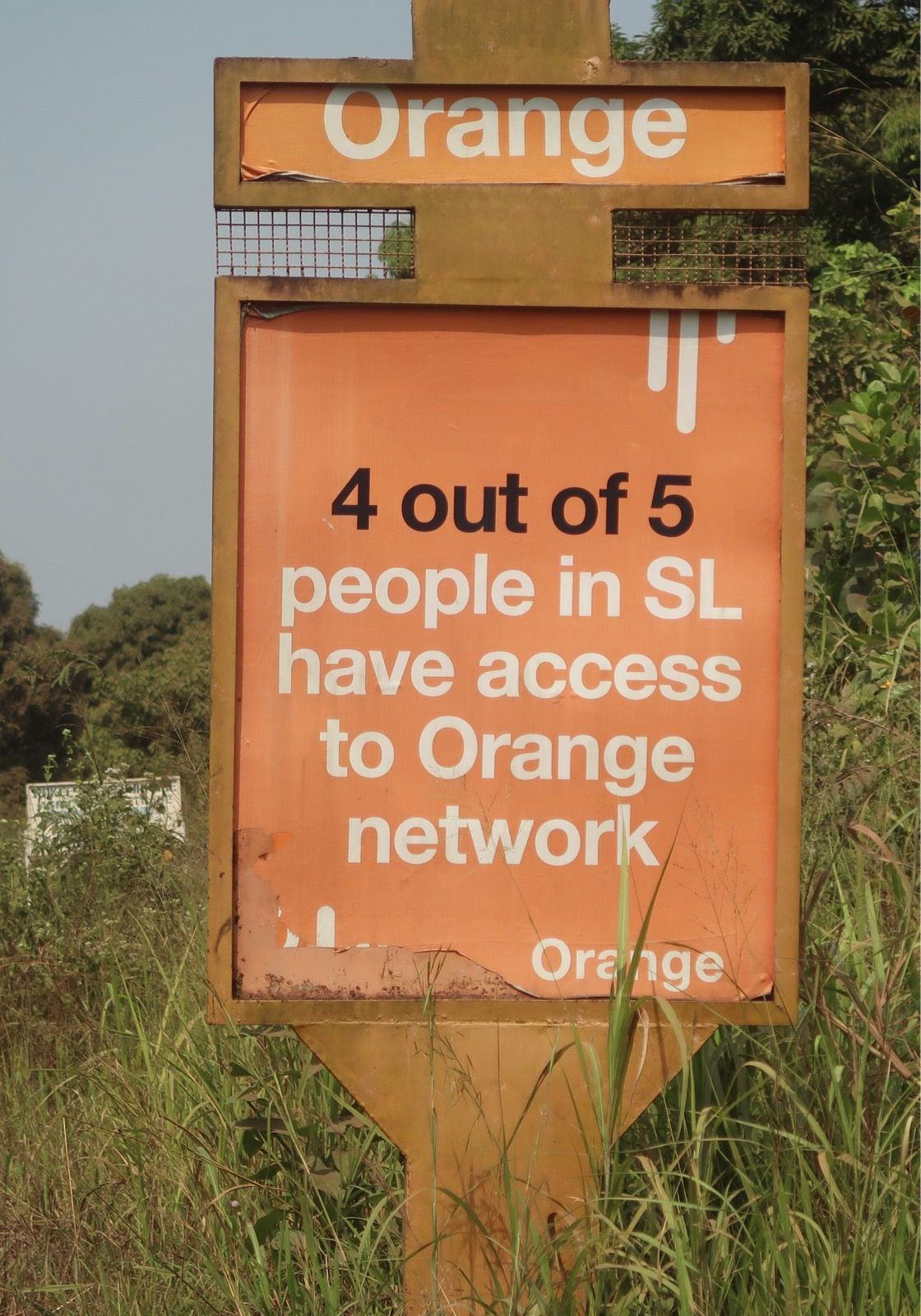
4 out of 5 people have access in Sierra Leone?

A smartphone is 29,000 XOF, so about $45.
—

Rent costs of $6.50 per month.


Here is the basic layout of the villages I’ve been passing. They might be a little larger with more huts - or even a mosque in some of the bigger ones. I don’t think all of the villages have bathrooms (though you may remember the “certified ‘poo free’ villages” in Northern Sierra Leone. There is no latrine smell in any of the villages.
💩
Strava Comments:
Stan H.
Interesting! I wonder what their internet experience is like. Slow, I would expect. And you mentioned some sites blocked by the government. But to think they (literate or not!) can generally surf the web is a revelation - for better or worse!
Mark G.
Thank you! This answers so many questions about the thought, "but how can a person live on $x per year." Thank also for the podcast link. Love your map. The cellphone money thing is very interesting; sorta like Venmo without a bank. ......----> BTW's••>My brother always said his very favorite military deployment was when he went to remote villages to provide eye care. Long lines of people all of a sudden being able to see clearly or have ocular remedies that seemed like magic. ••> In the 70's I did Europe on $5/day. ••> Your own spending spreadsheet is also very interesting.
Brian L.
Stan Hooper - internet speed is good. As good as at home or better in some cases. Internet slows down in larger towns where there isn’t enough bandwidth for all the users. In fact, one reason I moved to morning posts is because in the evening, the internet is crowded- but no one is awake at 5:50AM!
Anne F.
When I was in Senegal for a college-related trip in 2008-ish, tons of Senegalese had cell phones. More than in the US - most of my US college friends were still getting their first cells. If I recall correctly, cell service took off more rapidly because it didn't require the same infrastructure as land lines that the US had invested in so extensively. Phones in the US somehow have become status symbols, so I think it confuses Americans to see cell phones in impoverished areas, but connectivity is a universal human need (arguably), ie your point about mobile money, and while cell is "high tech" it also can be high impact once a single tower is installed.
Brian L.
Mark Glenesk - my spreadsheet includes air fare, cell phone, donations and gifts, bike parts, exchange rate losses (and gains)… stuff that people don’t always include in their “cost per day”
Anne F.
Now, I wonder who has explored cell-phone based educational services (think, Duolingo or the myriad e-learning apps American kids use, but aimed at local populations and culturally contextual) to fill some of the education gaps that kids are missing out on.
Janet W.
You put a lot of thought into how people in Western Africa trip to make ends meet. I hadn't thought of 'giving cash' instead of things being a good idea, but now I see the point. I'm wondering if so many ATMs are broken and not repaired because people weren't using them much. Maybe families and friends share a smart phone to cut the cost. They do seem to expensive to afford or maybe aid workers give them out. People could still take advantage and spend cash on unnecessary things, like alcohol or fancy clothes. Hopefully that doesn't happen much. It seems like people 'find a way', even if the in villages are woefully lacking in access to healthcare.
Jesse B.
Your story telling, narration and exposition are so well blended and entertaining! Thank you for giving us such an exploring eye into a real place we know so little about!
Brian L.
Anne Farrell - YES! It seems like “being behind” a little on the development curve allows developing nations to skip technologies like land lines. I think that is also how the rest of the world ended up with 220 volts instead of 110. USA started electricity.. but there was already too much infrastructure by the time it was decided that 220v might require cheaper transmission lines.
J&K S.
Very useful context for what we're seeing and hearing in your daily reports, Brian. Full speed ahead!
Corrine L.
Great post. You really need to put these posts all together in some way when you get back home.
Ann L.
Wow what an interesting post with a lot to digest. Thanks for taking the time to research and share all that.
Russell D.
It's a life changing technology for them even more than the average American who has internet access several times over in many cases. It avails them of banking and connects them, so maybe it's worth 5 months rent?
Russell D.
Thanks so much for sharing!
Pete P.
Very informative post. Thanks.
Ryan A.
That was an excellent read. Thank you.
Osman I.
What a great, thoughtful and thought-provoking post. I don’t understand "The Economy" whether it applies to Africa or the world. When I bought your bike, how did the world's economy grow? Civilizations existed before money was even invented, so our cash-based accounting logic may be fallable. Do you see signs of feudalism? Do you only see villagers but not peasants or landlords?
Ride Stats:
| Elapsed Time | Moving Time | Distance | Average Speed | Max Speed | Elevation Gain | Calories Burned |
|---|---|---|---|---|---|---|
|
10:38:13
hours
|
05:24:29
hours
|
91.20
km
|
16.86
km/h
|
46.34
km/h
|
582.00
meters
|
2,366
kcal
|










